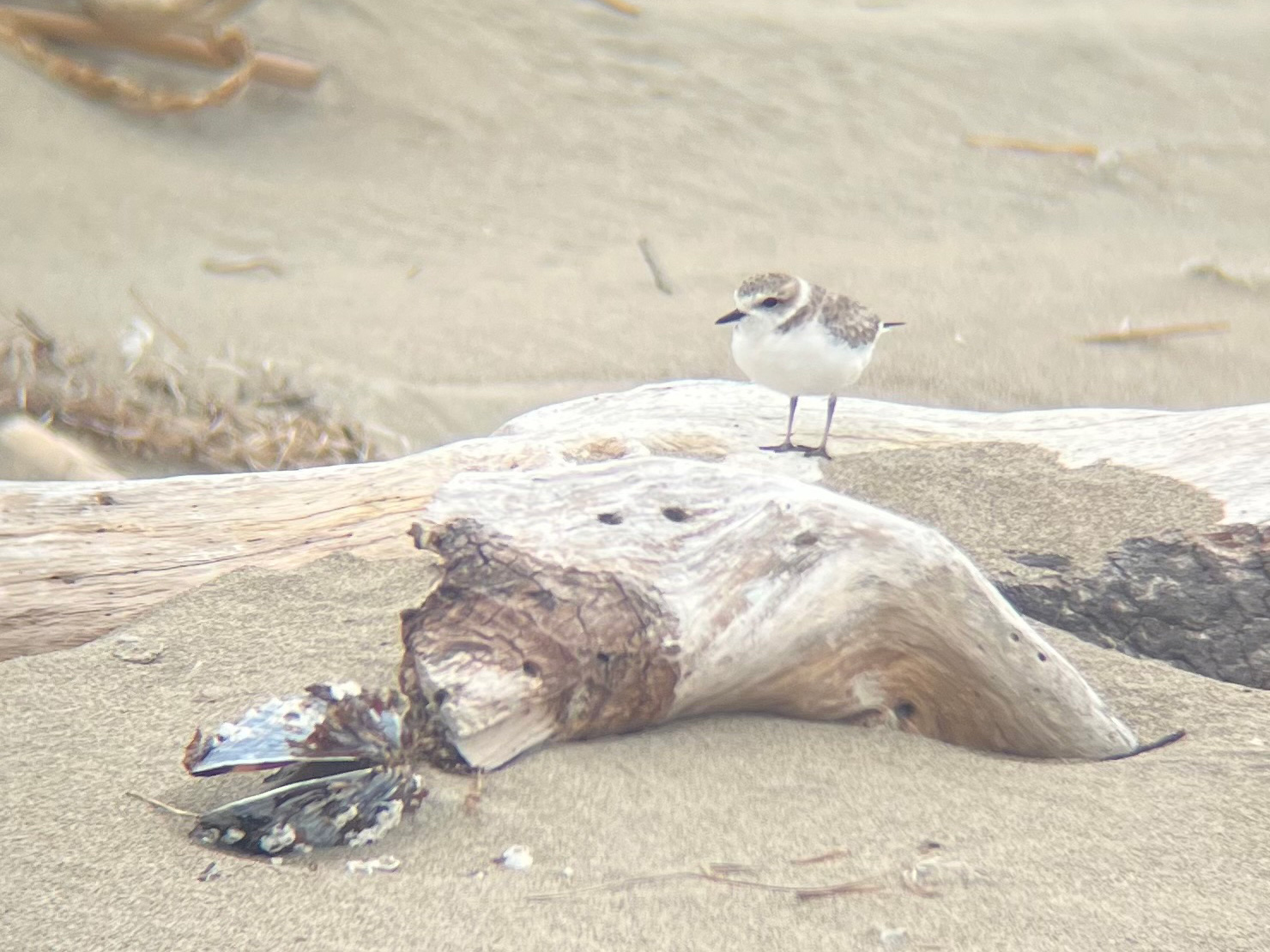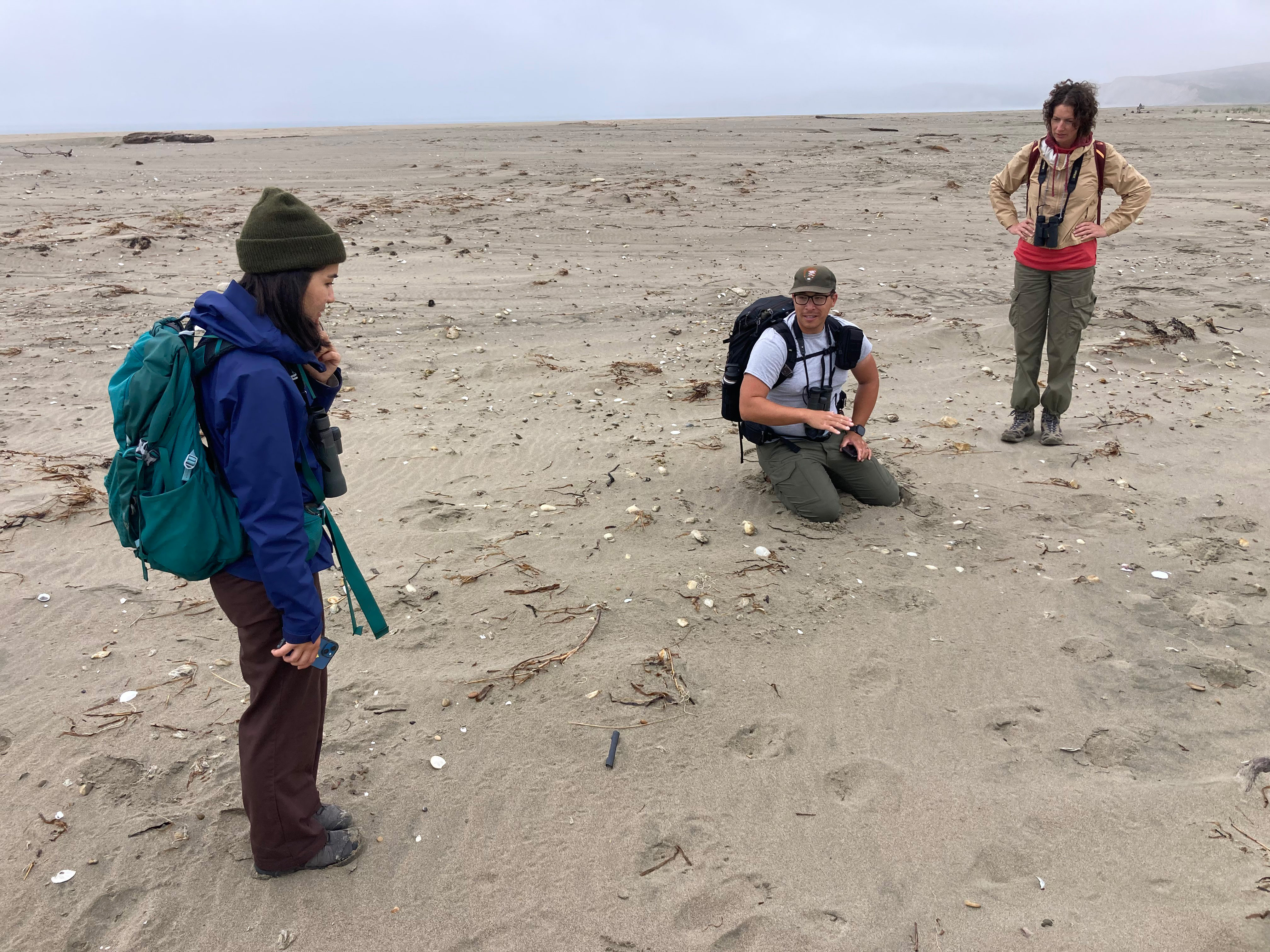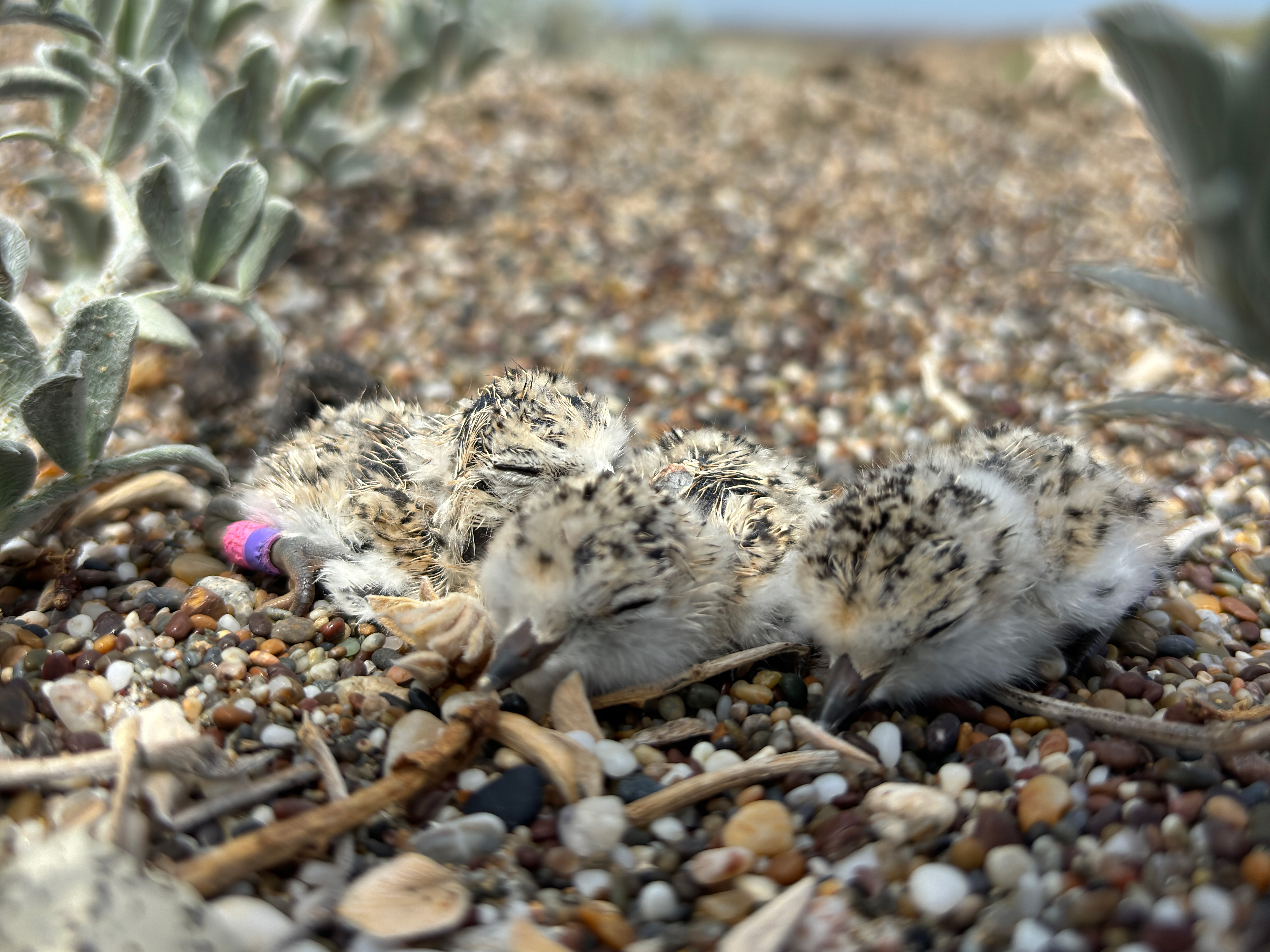Overview
Hello Ploverites!
This week, biologists were busy banding chicks, searching for broods, confirming fledges, and looking for new nests. Small snowy plover flocks have been seen around the seashore, signaling the start of winter flocking. In the coming weeks, biologists will be busy searching for the last nests of the breeding season. At this time, we have two active nests on Kehoe Beach, two in the Abbotts Lagoon Restoration Area, and five on the beach between the Abbotts Lagoon mouth and North Beach parking lot.
Snowy plovers and many other bird species form flocks in the winter as a way to maximize foraging and protection from predators. Plovers of all ages can be found in the ‘winter’ flocks including juvenile plovers hatched this most past season. Biologists are reading all color banded plovers in the flocks to see if some more Point Reyes juvenile plovers can be confirmed.
There was some big news this week! On July 8, monitoring volunteer Wanda Bonneville found a snowy plover nest on Drakes Spit! It was found in the process of hatching—two freshly hatched chicks and one egg were in the nest cup. The snowy plover team went out the following morning and successfully banded two out of the three chicks and the adult male. The female plover was already banded and is thought to be from Monterey Bay.
This is huge news for the snowy plover population at Point Reyes for many reasons. Drakes Spit has not had any known nesting activity since 1978! It is regularly monitored during the snowy plover season due to it being designated as critical habitat for the snowy plover under the species' 2007 Recovery Plan. For snowy plovers to be delisted, there must be a breeding population of plovers in these critical habitats. Snowy plovers exhibit some nesting fidelity, meaning they return to the same beaches, especially if they successfully hatched nests. Snowy plover chicks also exhibit some natal philopatry—they often return to the beaches where they hatched. This successful nest is a hopeful sign that the adult pair will return to the spit to nest next season and even attract other snowy plover pairs to the area.
If you have any questions, please feel free to contact Matt Lau via email.
Productivity Stats
- 39 total nests this season
- 9 active nest
- 19 hatched
- 11 failed nests
- 9 chicks on PRNS beaches
- 15 chicks fledged
 Juvenile snowy plover on Limantour Beach. Note the white-edged feathers.
Juvenile snowy plover on Limantour Beach. Note the white-edged feathers.
Photo credit: NPS Photo/Aiko Goldston
 A snowy plover nest in the process of hatching that was found by a snowy plover monitoring volunteer on Drakes Spit.
A snowy plover nest in the process of hatching that was found by a snowy plover monitoring volunteer on Drakes Spit.
Photo credit: NPS Photo/Wanda Bonneville
 Snowy Plover biologists Matt Lau (center) and Aiko Goldston (left) with snowy plover monitoring volunteer Wanda Bonneville (right) examining the Drakes Spit nest site.
Snowy Plover biologists Matt Lau (center) and Aiko Goldston (left) with snowy plover monitoring volunteer Wanda Bonneville (right) examining the Drakes Spit nest site.
Photo credit: NPS Photo/Carleton Eyster
 Two newly hatched snowy plover chicks from a nest in the Abbotts Lagoon restoration area. The third egg was pipped, and the chick was just about to break open.
Two newly hatched snowy plover chicks from a nest in the Abbotts Lagoon restoration area. The third egg was pipped, and the chick was just about to break open.
Photo credit: NPS Photo/Matt Lau
 Three snowy plover chicks from the photo above, fully hatched and banded. Can you guess which one hatched from the third egg? (Hint: look at their level of dryness.)
Three snowy plover chicks from the photo above, fully hatched and banded. Can you guess which one hatched from the third egg? (Hint: look at their level of dryness.)
Photo credit: NPS Photo/Matt Lau
The National Park Service shall not be held liable for improper or incorrect use of the data described and/or contained herein. These data and related graphics (if available) are not legal documents and are not intended to be used as such. The information contained in these data is dynamic and may change over time. The National Park Service gives no warranty, expressed or implied, as to the accuracy, reliability, or completeness of these data. For more information: https://www.nps.gov/disclaimer.htm
